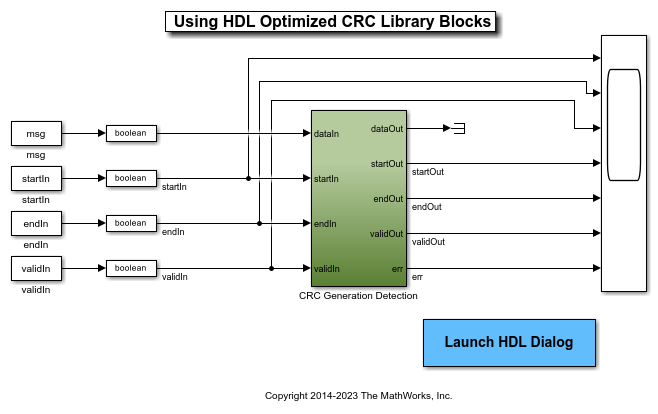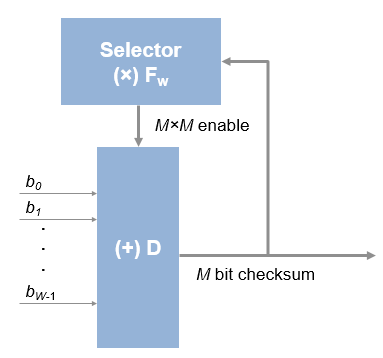General CRC Syndrome Detector HDL Optimized
Detect errors in input data using CRC
Libraries:
Communications Toolbox HDL Support /
Error Detection and Correction /
CRC
Description
The General CRC Syndrome Detector HDL Optimized block performs a cyclic redundancy check (CRC) on data and compares the resulting checksum with the appended checksum. The General CRC Syndrome Detector HDL Optimized block processing is optimized for HDL code generation. If the two checksums do not match, the block reports an error. Instead of processing an entire frame at once, the block accepts and returns a data sample stream with accompanying control signals. The control signals indicate the validity of the samples and the boundaries of the frame. To achieve higher throughput, the block accepts vector data up to the CRC length and implements a parallel architecture.
Examples
Ports
Input
Output
Parameters
Algorithms
References
[1] Campobello, G., G. Patane, and M. Russo. “Parallel Crc Realization.” IEEE Transactions on Computers 52, no. 10 (October 2003): 1312–19. https://doi.org/10.1109/TC.2003.1234528.
Extended Capabilities
Version History
Introduced in R2012b


